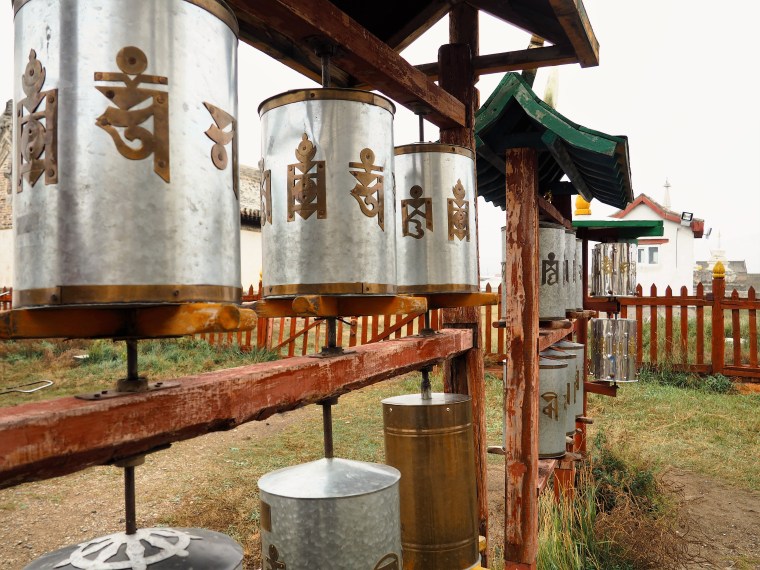The role of a teacher in Mongolia is reveled. Students respect their teachers and a teacher’s dedication to their job and hard work is rewarded every year on the first week of October, National Teacher’s Day. This is a week-long celebration. On 30 September, 12th graders became the teachers for the day while teachers took the day off and had sport competitions all day and night.
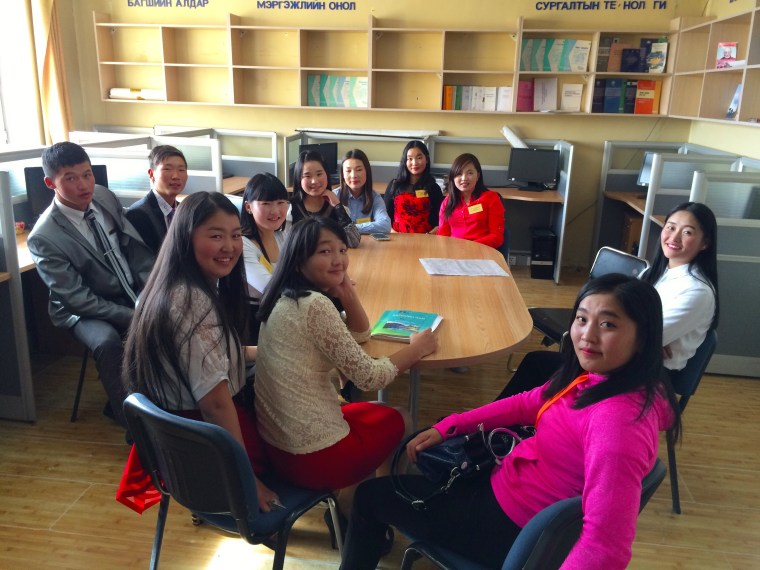
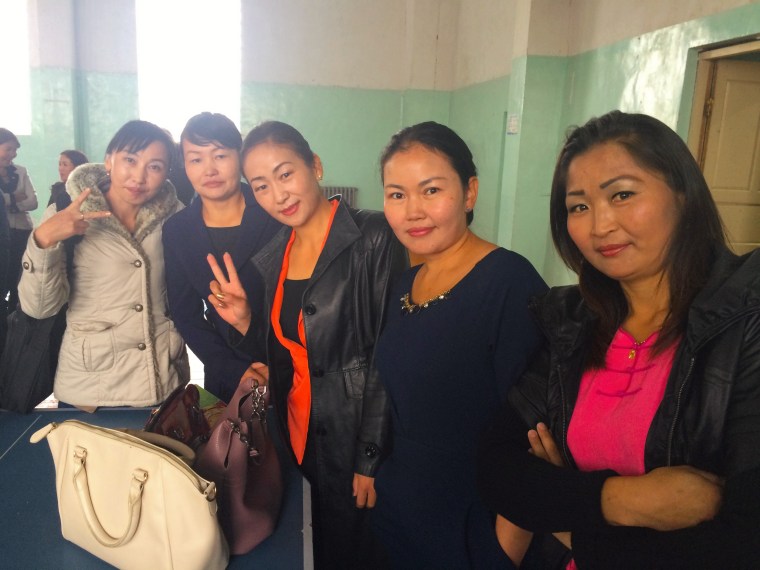
I rocked up to school wearing my sneakers and volleyball outfit. I just love how everyone assumes I’m a volleyball expert because I’m tall. I usually end up kicking the ball. I didn’t know that all the teachers would eventually change into their sport outfits later. So for the first three hours, I felt very much like an awkward kangaroo, just bouncing on my heels waiting for my counterparts to change out of their fancy dresses and high heels.
Volleyball would have fared better if the ball hadn’t been rock-solid. It seemed every time that the ball ricocheted off of an arm an expletive was heard. The entire competition lasted until 2 AM. Nevertheless, we English teachers came in 2nd place and got silver medals for our bruises, sleep deprivation, and sportsmanship. In between games, we played table tennis. Teachers also bought food and drink. I went the lazy route and bought bags of chips while my counterparts make khuushuur, soup, and buuz. A thermos of hot milk tea and bottles of vodka and wine decorated the table but I had to pass on the first two due to it being 9 AM. I definitely would have been awful at volleyball if I had gone down that road.
Like Stanley Stewart wrote in his book “In the Empire of Genghis Khan:” “When Mongolians party the rest of Asia locks its doors.” I can wearily support this statement.
At 8 PM, the volleyball competition was put on pause and was replaced with an assembly. Teachers rushed to switch outfits. The lights of the gym were dimmed and music that sounded like music from an action movie trailer started to play. All the 12th graders stood in two long lines on both sides of the gym, clapping and cheering for all the teachers as we walked down the middle. It felt like I was being applauded for winning a medal of valor. The director of the school made a speech and there were singing and dancing performances. I managed to not clumsily trip my way through the Mongolian waltz.

On 6 October, teachers from all the schools in the aimeg gathered together in the theater for an awards ceremony. There were many long and tedious Mongolian speeches. I found myself nodding off as unintelligible Mongolian was spoken, awards were awarded and pictures were taken on stage. Thankfully, the award ceremony ended and a concert began. This concert was incredible! It was every tourist’s dream who visits Mongolia. Teachers played various instruments such as the horsehead fiddle. Gorgeous outfits were worn. There was dancing and singing including throat singing. Also, when Mongolians clap, they clap together in unison.
After the concert, everyone scattered to their respected school’s party at a venue. My school’s party was held at the Wedding Palace. Dinner was served while more speeches were made and more teachers won awards. Vodka was being chugged at such as speed that I didn’t think anyone was going to show up to school the next day. The entire week was a whirlwind as I celebrated a new holiday in my new home.
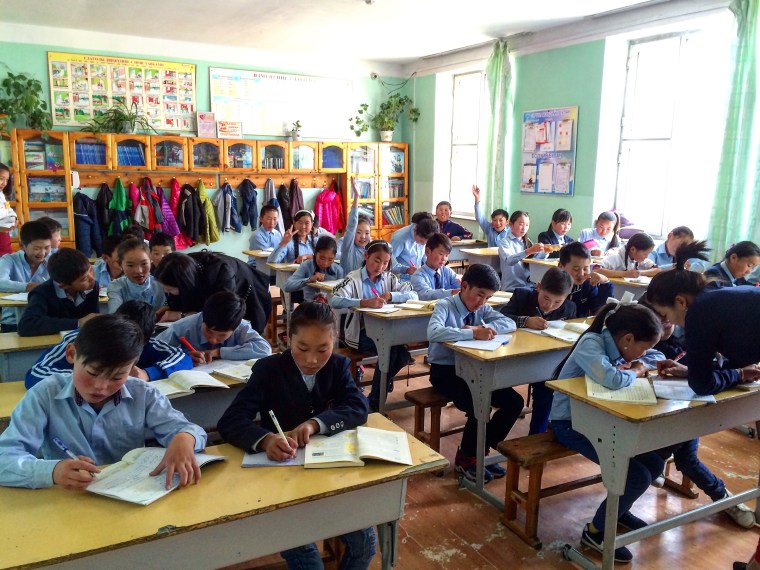
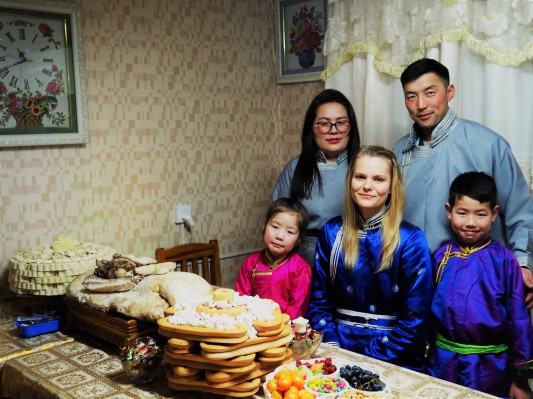

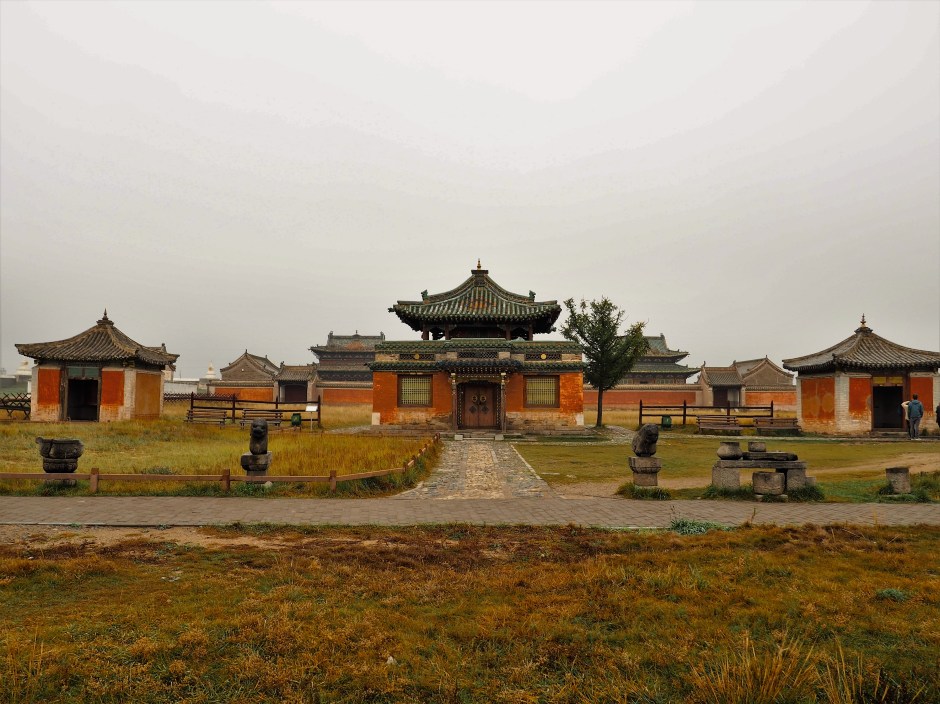




 Tourists can stay in ger camps that offer beautiful scenery of the river and hills.
Tourists can stay in ger camps that offer beautiful scenery of the river and hills.
